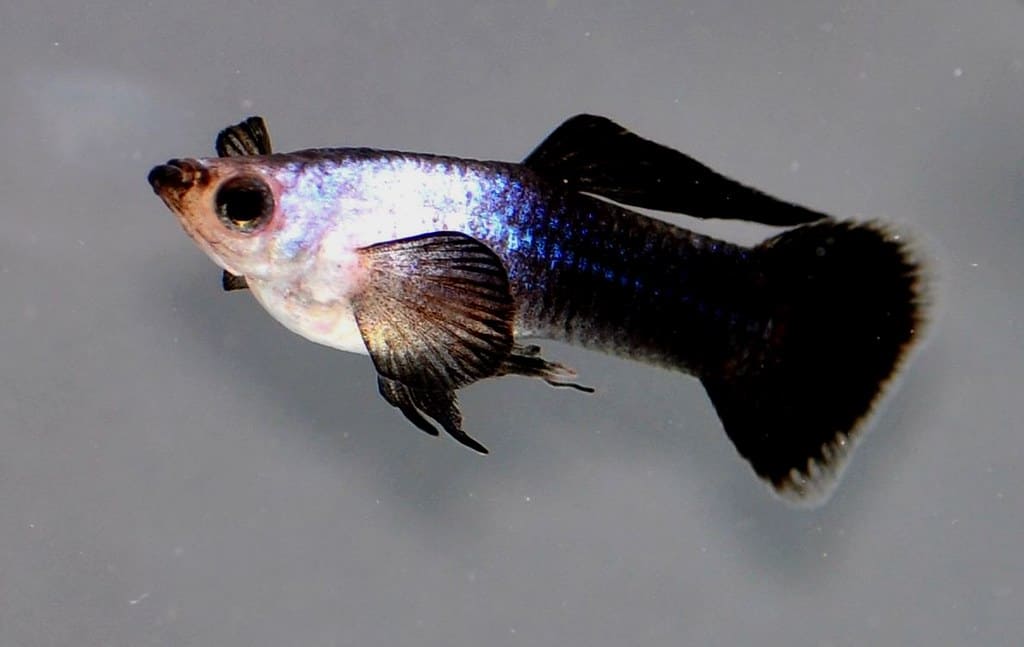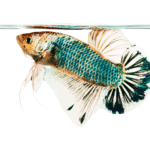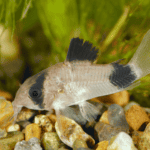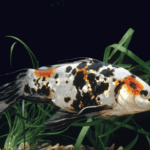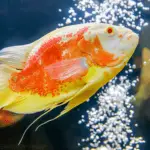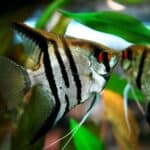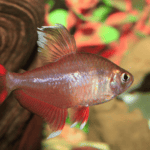Panda Guppies captivate aquarists with their striking black and white markings reminiscent of the giant panda, earning them their charming moniker. These small freshwater fish are a popular choice for both novice and experienced aquarium enthusiasts, valued for their lively behavior and ease of care. As members of the Poeciliidae family, they share lineage with other livebearers, which contributes to their resilience and adaptability in home aquarium settings.
The vivid coloration and distinct patterns of Panda Guppies make them an attractive addition to a diverse community tank. Despite their ornamental appeal, they are hardy creatures that can thrive in a variety of water conditions, provided that their basic requirements are met. Their dietary needs are straightforward, and they accept a wide range of commercially available fish foods.
Breeding Panda Guppies can be a rewarding experience, as they often breed prolifically with little intervention required from the aquarist. Maintaining a healthy environment is crucial, as it not only encourages breeding but also ensures the well-being of these delightful fish. Regular monitoring for signs of health issues can prevent common ailments and ensure a thriving aquatic community.
Key Takeaways
- Panda Guppies are known for their unique black and white coloration and ease of care.
- They are adaptable to various water conditions and have straightforward nutritional requirements.
- These guppies breed easily and require a healthy tank environment to promote well-being.
Discovering Panda Guppies
We recognize Panda Guppies as a captivating variant of the well-known species, Poecilia reticulata, often just called guppy. Originally found in the warm freshwater habitats of South America, guppies have become a staple in aquariums worldwide.
- Origin: South America
- Species: Poecilia reticulata
- Common Name: Guppy
- Variety: Panda Guppy
These freshwater fish display distinct coloration reminiscent of the giant panda, with patches of black and white adorning their bodies and tails. The striking pattern makes them highly sought-after as aquarium fish, providing an aesthetic appeal to hobbyists.
Breeding: The breeding of Panda Guppies is akin to that of other guppy varieties, with particular emphasis on selective breeding to maintain their unique coloration. Males are typically smaller and more vibrantly colored than females, a trait that is especially prominent in this strain.
Care: In our experience, Panda Guppies require standard guppy care, thriving in well-maintained freshwater tanks that mimic their natural environment. This includes a temperature range of 22-28°C (72-82°F) and a pH between 6.7 and 7.8.
Feeding: Their diet is not species-specific; they do well on a regimen of high-quality flake or pellet food, supplemented with live or frozen fare, such as brine shrimp or bloodworms.
In conclusion, the allure of Panda Guppies lies in their unique beauty and ease of care, making them a delightful choice for aquarium enthusiasts looking to add some contrast to their freshwater setups.
Anatomy and Appearance
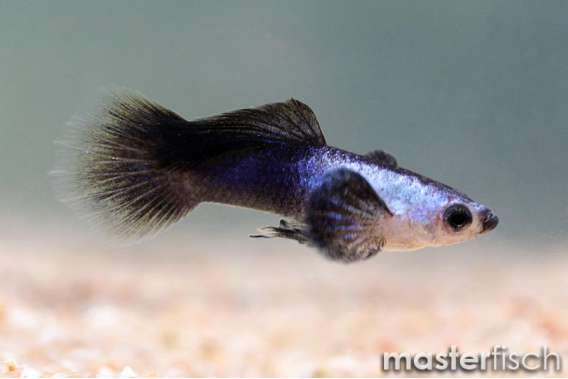
Panda Guppies possess distinctive features that set them apart in the aquarium trade. We shall explore their vibrant coloration and unique physical characteristics that contribute to their popularity.
Colors and Patterns
Panda Guppies display a captivating array of colors often complemented by unique patterns. The defining characteristic of these fish is their resemblance to the panda bear, typically featuring a combination of black and white areas. The body may exhibit a solid base color with contrasting patches or spots, resembling a panda’s coat. Males often boast brighter and more varied colors compared to females, with intricate tail patterns that serve as an indicator of their health and vitality.
- Males: Bright, various colors with complex tail patterns.
- Females: More subdued coloration, often with less intricate patterns.
Physical Characteristics
In terms of size, Panda Guppies are relatively small, which makes them ideal for community tanks. Adult males generally measure around 1.5 inches (3.8 cm) in length, while females are slightly larger, reaching up to 2.2 inches (5.6 cm). Females also tend to have a rounded abdominal area, especially when gravid. The males exhibit longer and more elaborate caudal (tail) fins which may come in various shapes, including the fan, delta, and spade, contributing to their ornamental value.
Size:
- Males: Up to 1.5 inches (3.8 cm).
- Females: Up to 2.2 inches (5.6 cm).
Tail Fins:
- Male Tail Shapes: Fan, Delta, Spade.
Habitat and Tank Conditions
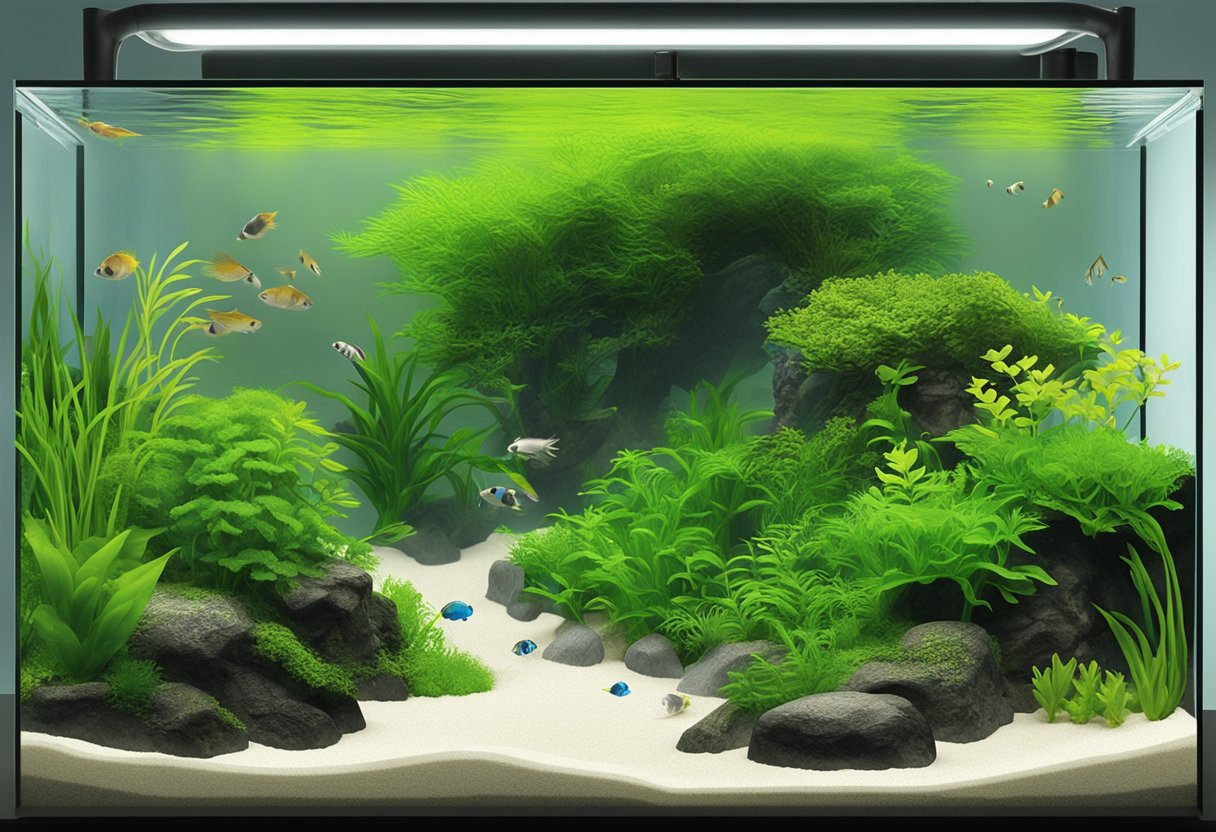
In our care for panda guppies, we prioritize an environment that closely mimics their natural habitat. An ideal aquarium setup and stringent control of water quality and parameters are essential to their health and well-being.
Aquarium Setup
We set up the aquarium with a tank size of at least 10 gallons to provide ample space for the panda guppies to swim and exhibit natural behavior. The substrate is chosen to be dark, which not only enhances the stunning colors of the guppies but also replicates the river beds they originate from. Decorations and floating plants are added to the tank to provide hiding spaces and to mimic their natural environment. Java moss is a favored addition, as it offers excellent cover and a surface for the fish to graze on biofilm.
- Tank Size: Minimum 10 gallons
- Substrate: Dark-colored gravel or sand
- Decorations: Smooth rocks, driftwood
- Plants: Floating species, Java moss
Water Quality and Parameters
We closely monitor water quality to ensure the best conditions for our panda guppies. The water temperature is maintained between 72-82°F, which is optimal for their tropical nature. We keep the pH level within a range of 6.7 to 7.8 to match their preference for slightly acidic to neutral water. Regular checks on the water parameters are conducted using reliable test kits. Proper filtration is essential to maintain cleanliness and water clarity, while lighting should be moderate to discourage the growth of algae and to simulate a natural day-night cycle.
- Temperature: 72-82°F
- pH Level: 6.7 – 7.8
- Water Parameters:
- Ammonia: 0 ppm
- Nitrite: 0 ppm
- Nitrate: <20 ppm
- Filtration: Adequate for tank size
- Lighting: Moderate, mimicking natural daylight periods
Feeding and Nutrition
Proper feeding and nutrition are crucial for the health of panda guppies. We need to understand their dietary requirements and establish a consistent feeding schedule with appropriate food types.
Dietary Needs
Panda guppies are omnivorous, meaning they require both plant-based and meat-based food to thrive. Their diet should be varied to ensure they receive all necessary nutrients. It should include:
- Algae: A natural part of their diet, algae can come from their tank environment or added as spirulina flakes.
- Meat: They benefit from the protein found in live, frozen, or freeze-dried foods like brine shrimp, bloodworms, daphnia, and tubifex.
Regular inclusion of these foods supports their growth and immune system.
Feeding Schedule and Types of Food
We should adhere to a regular feeding schedule to avoid overfeeding our panda guppies. A good routine is:
- Twice daily: Morning and evening feedings are sufficient.
- Amount: Enough that they can consume within 1-2 minutes.
Types of food we can provide include:
- Flakes: These should be a staple of their diet, offering balanced nutrition.
- Pellets: Sinking pellets are suitable for guppies that prefer eating at lower water levels.
- Freeze-dried bloodworms: Offer occasionally as a treat.
- Brine shrimp and daphnia: Live or freeze-dried to enrich their diet with protein.
It is essential to ensure variety and moderation in their feeding for optimal health.
Breeding and Reproduction
When we consider the breeding and reproduction of panda guppies, it’s integral to focus on the practices that ensure the health and vitality of both the adult guppies and the resulting fry. Panda guppies are livebearers, meaning the females give birth to live, free-swimming young. We’ll explore the straightforward breeding practices and the nurturing care required for the developing fry.
Breeding Practices
In our breeding approach, we often employ selective breeding to enhance specific desirable traits in panda guppies, such as their distinctive coloration and pattern. To start, we ensure a comfortable ratio between female and male guppies, typically three females to one male, to prevent the females from becoming overly stressed by the males’ advances. Once mating occurs, the gestation period for female guppies lasts about 26 to 31 days.
| Gestation Period | Female to Male Ratio |
|---|---|
| 26-31 days | 3:1 |
During the latter part of gestation, we might isolate the pregnant female in a breeding box to protect the fry upon birth. This is because guppies can exhibit cannibalistic tendencies towards their young if not separated.
Caring for Fry
After birth, caring for panda guppy fry requires specific attention to maximize survival rates. These fry are immediately able to swim and should be separated from adult guppies to prevent predation. We provide finely ground flake food or specialized fry food to cater to their nutritional needs, which is crucial for their growth.
A fry’s environment should be maintained with the following parameters for optimal development:
- Warm water temperatures ranging from 76 to 80 degrees Fahrenheit
- Regular water changes to keep the water clean and toxin-free
- Gentle filtration to avoid the fry being sucked into the filter
Ensuring these conditions are met will help the panda guppy fry to thrive and eventually develop into healthy adults for continued breeding or to be enjoyed as part of an aquarium community.
Health and Wellness
We understand that ensuring the health and wellness of panda guppies is crucial for their longevity and vitality. Our focus is to educate on the common ailments these freshwater fishes can encounter and the best practices to prevent health issues.
Common Guppy Diseases
Panda guppies, like all guppy breeds, are susceptible to several diseases. The most prevalent among these is Ich, also known as “White Spot Disease,” characterized by tiny white spots on the fish’s skin, gills, and fins. If left untreated, Ich can be fatal. Another frequent ailment is Fin Rot, where the edges of the fins appear torn or frayed, often starting from the tail and can lead to further bacterial infection if not addressed. Here’s a quick reference:
| Disease | Symptoms | Potential Treatment |
|---|---|---|
| Ich | White spots, clamped fins | Increased water temperature, medication |
| Fin Rot | Torn fins, redness at base | Antibacterial medication, improving water quality |
Preventive Care
When caring for panda guppies, preventive care is essential. They thrive in stable water conditions, and sudden changes can stress them, leading to illness. Keeping the water temperature between 72-82°F (22-28°C) and regularly checking the quality of the water are fundamental practices. Panda guppies are easy to care for as part of a freshwater community aquarium, but they require a balanced diet and clean habitat. Ensure the following to maintain their health:
- Regular water changes (25-30% weekly)
- Proper filtration to remove waste and toxins
- Avoidance of overfeeding to prevent water quality degradation
- Quarantine new fish before introduction to prevent the spread of diseases
By following these guidelines, we can greatly reduce the incidence of common diseases and keep our panda guppies thriving.
Frequently Asked Questions
In this section, we address common inquiries about Panda Guppies to provide you with accurate and concise information.
What is the typical size of a Panda Guppy?
A Panda Guppy typically reaches a size between 1.5 to 2.5 inches, including its tail.
Are Black Panda Guppies different from Red Panda Guppies?
Black Panda Guppies have a distinct black and white coloration, while Red Panda Guppies have red added to their coloration. Both are variations of Panda Guppies with the color difference being the main distinguishing feature.
Where can one find Dwarf Blue Panda Guppies for sale?
One can often find Dwarf Blue Panda Guppies for sale at specialty fish stores or through online tropical fish retailers that focus on rare or specific guppy breeds.
Why are Panda Guppies considered rare?
Panda Guppies are considered rare due to their unique coloration and the specific breeding required to produce their distinct black and white pattern, which is not commonly found in guppy populations.
What are some distinguishing features of Koi Guppies compared to Panda Guppies?
Koi Guppies differ from Panda Guppies by having a pattern and coloration similar to Koi fish, commonly including a combination of white, red, and black, with no fixed pattern, unlike the consistent black and white pattern in Panda Guppies.
What are three unique characteristics of guppy fish?
Guppy fish are known for their vibrant colors, diverse patterns, and the males’ ornate tails, which distinguish them from many other freshwater fish species.
